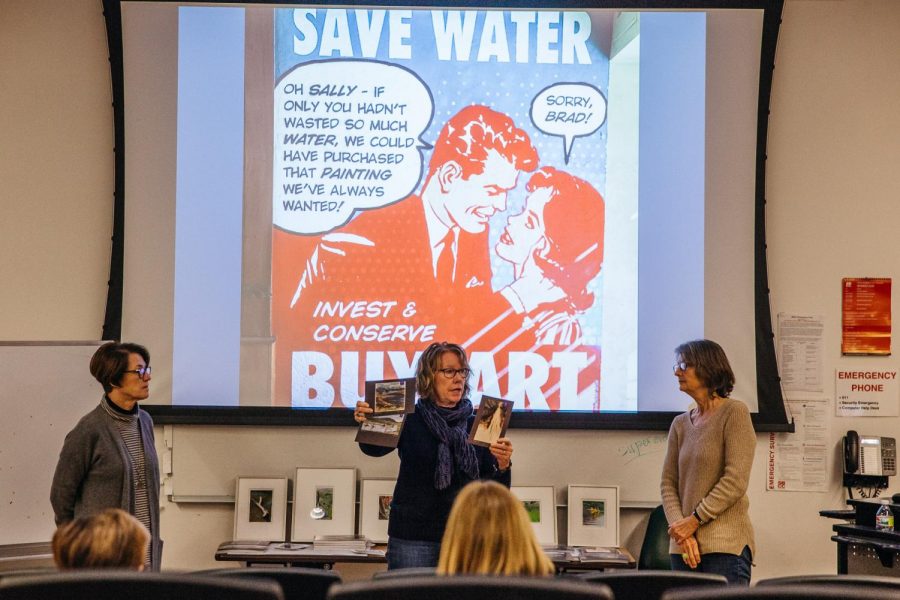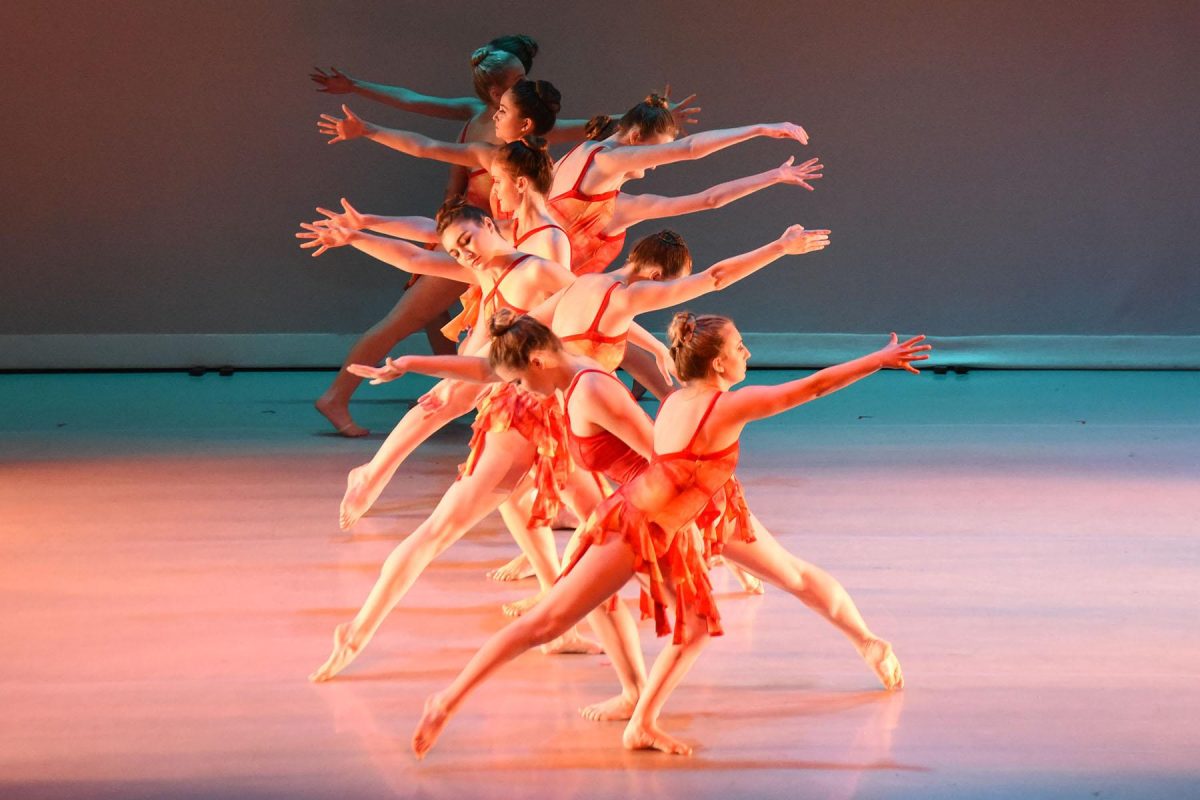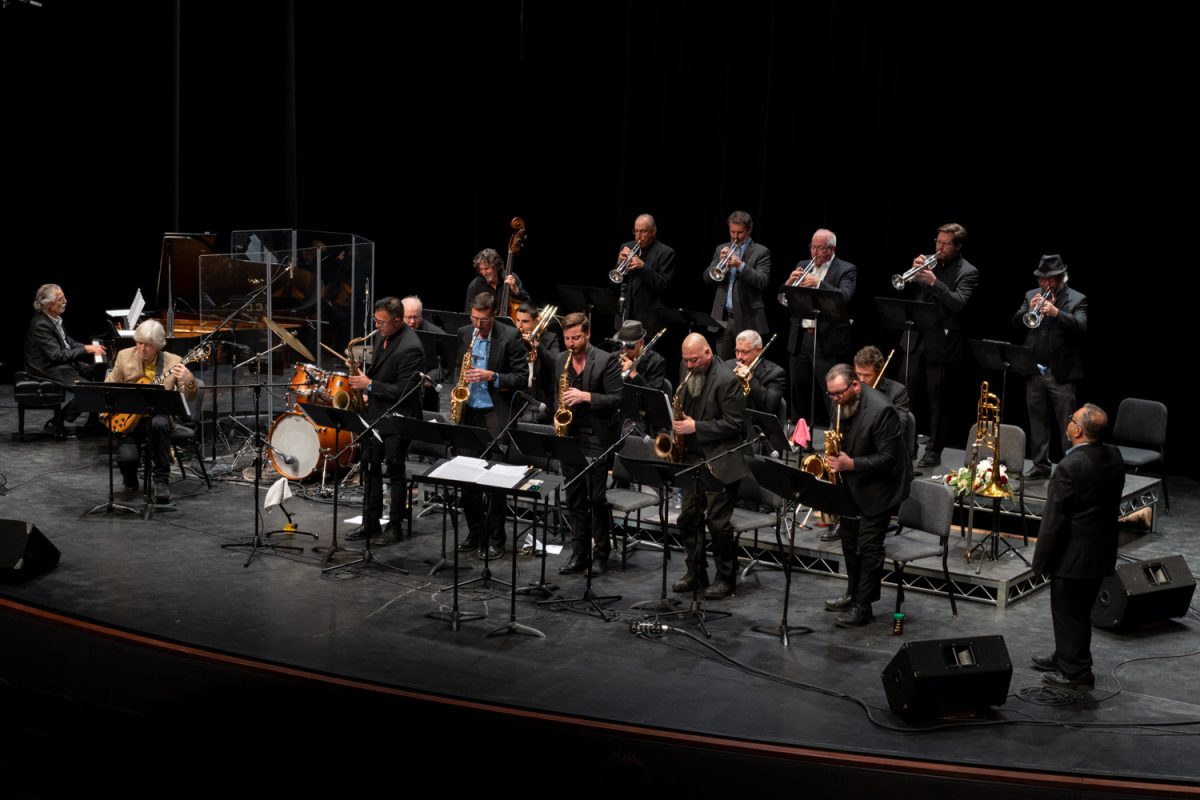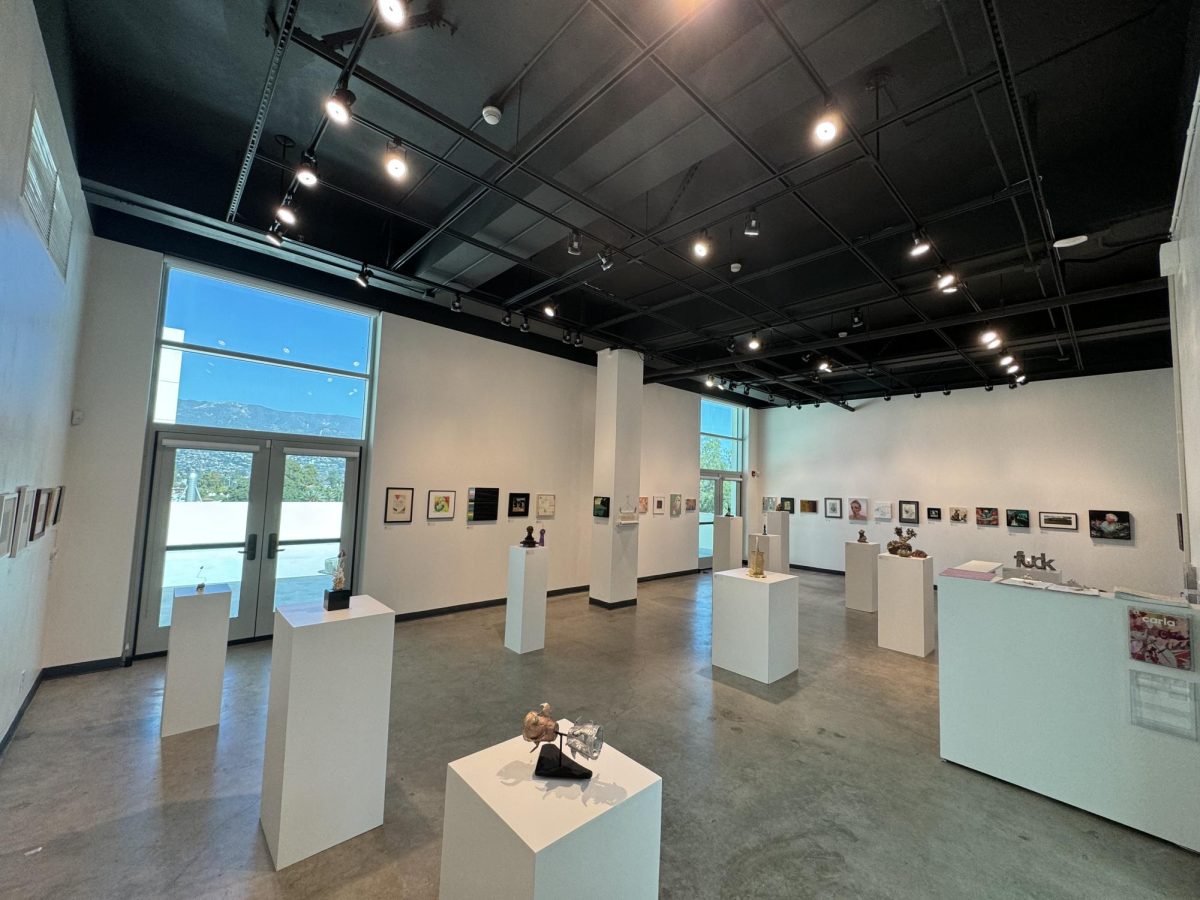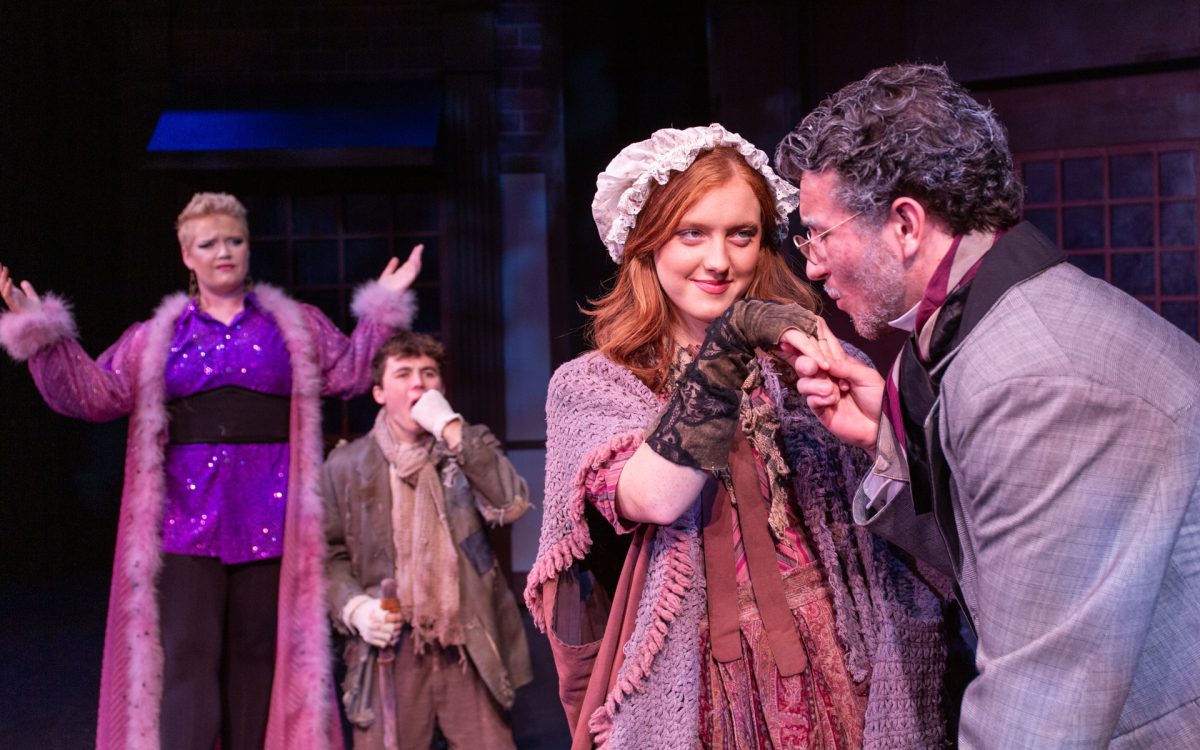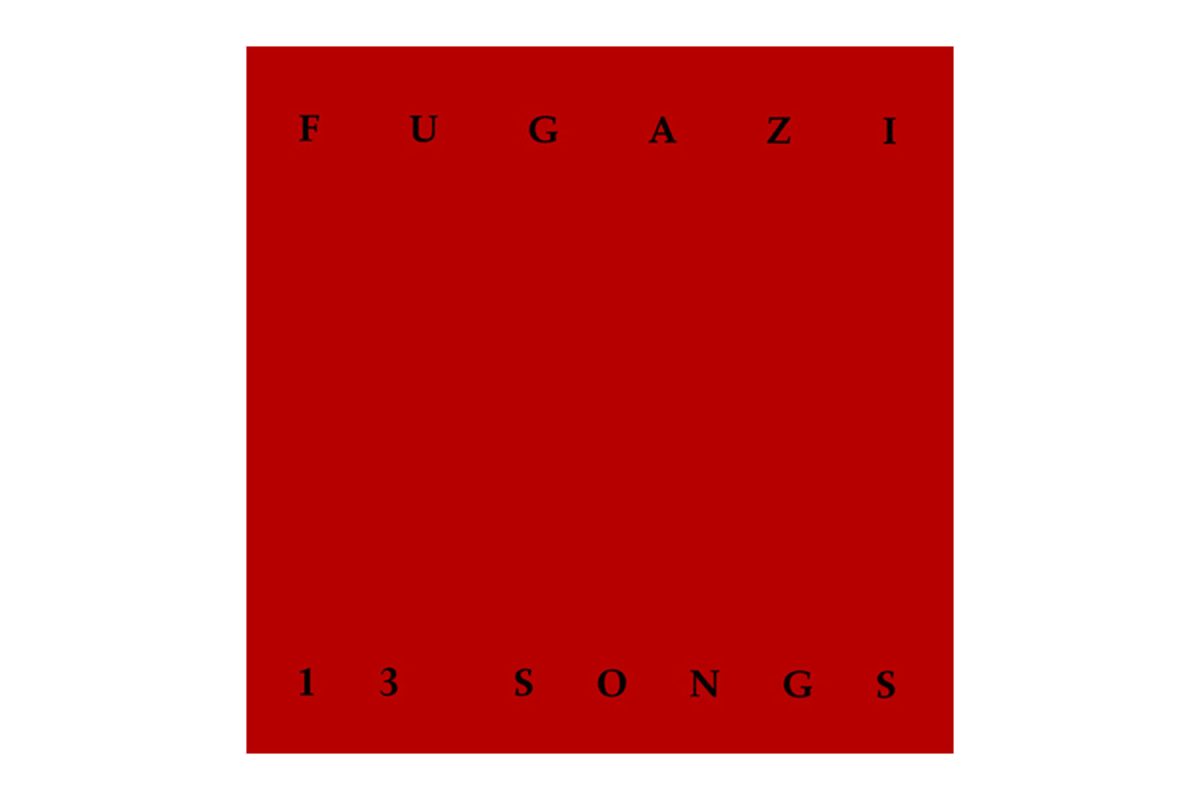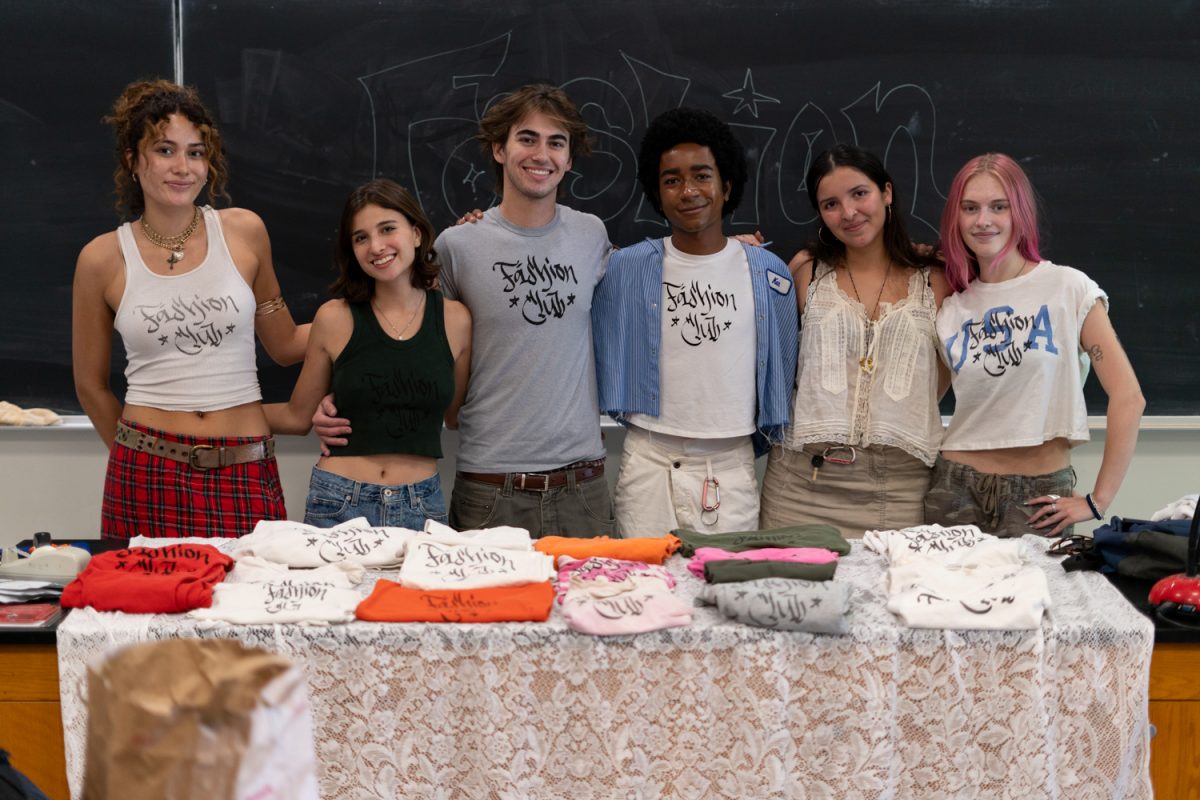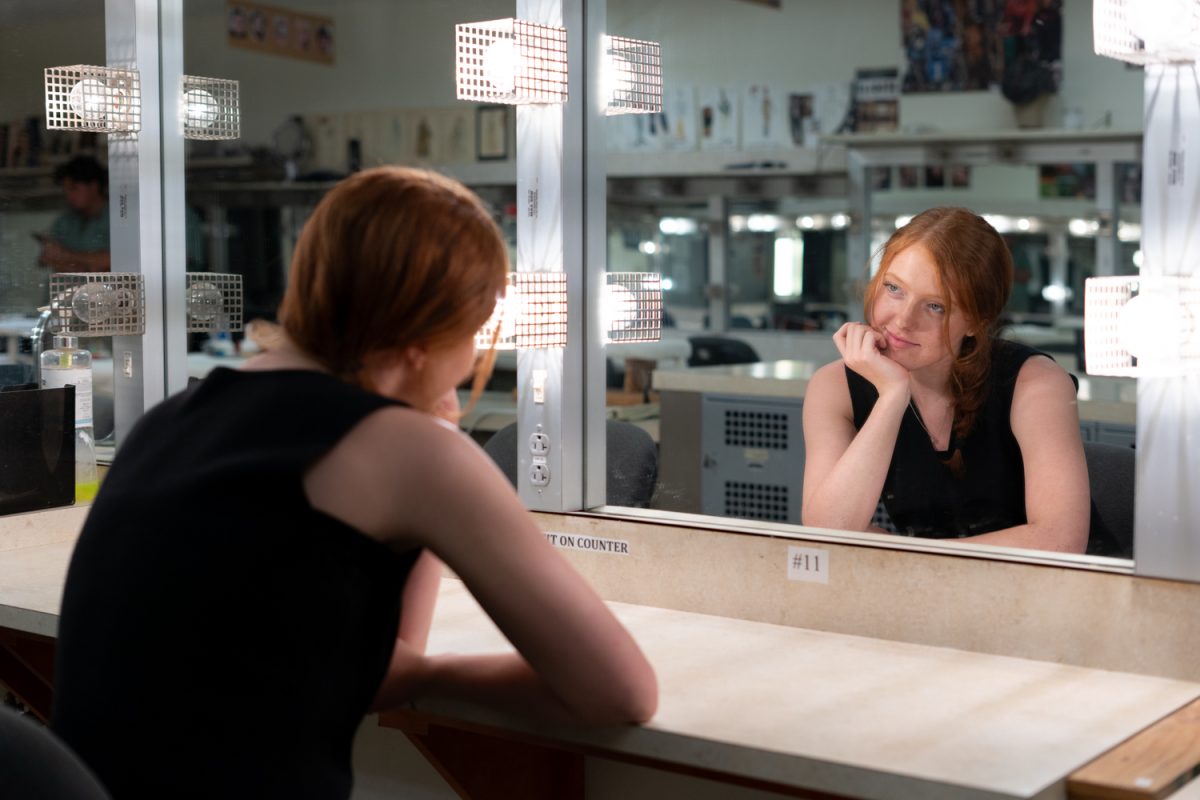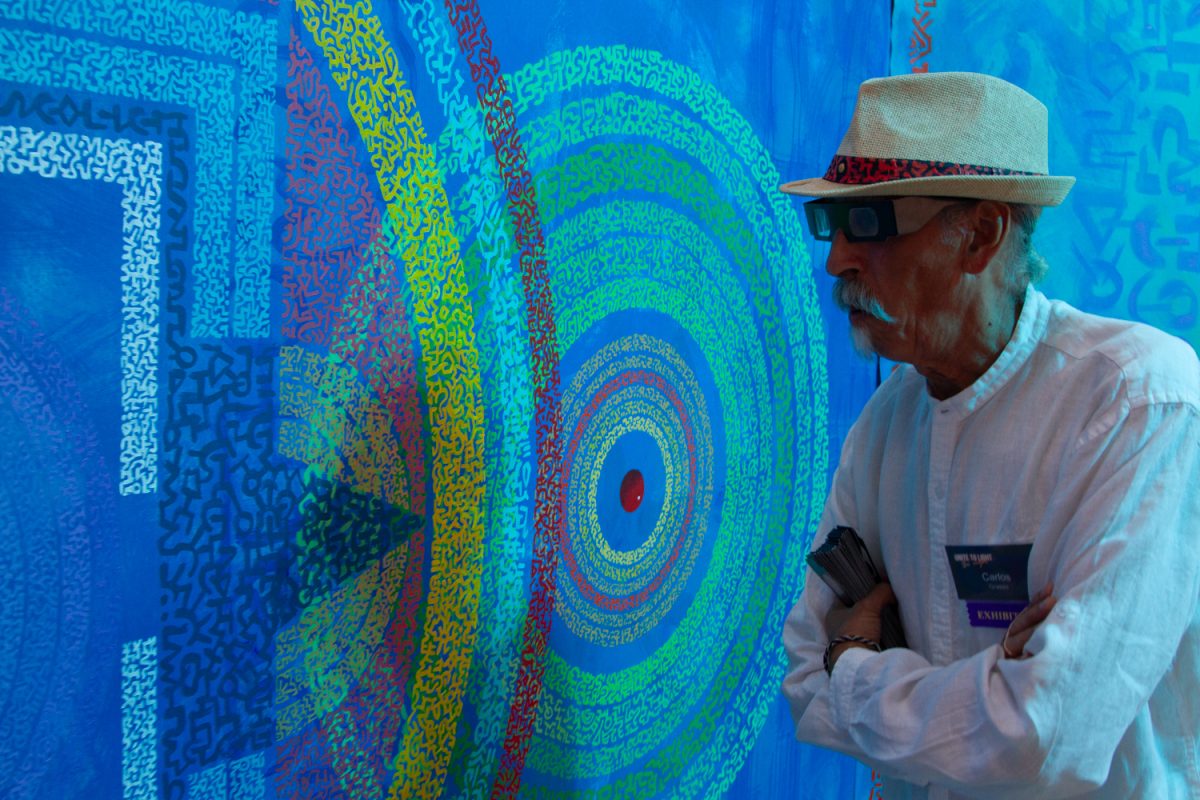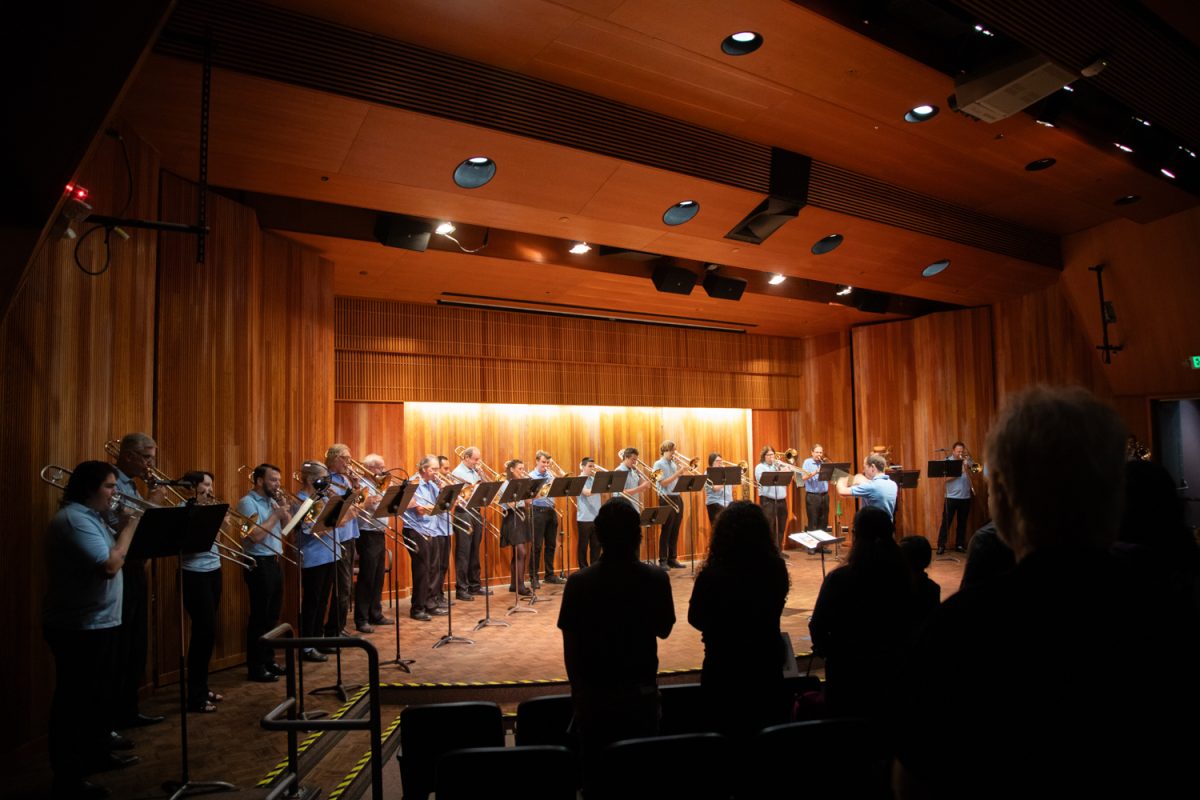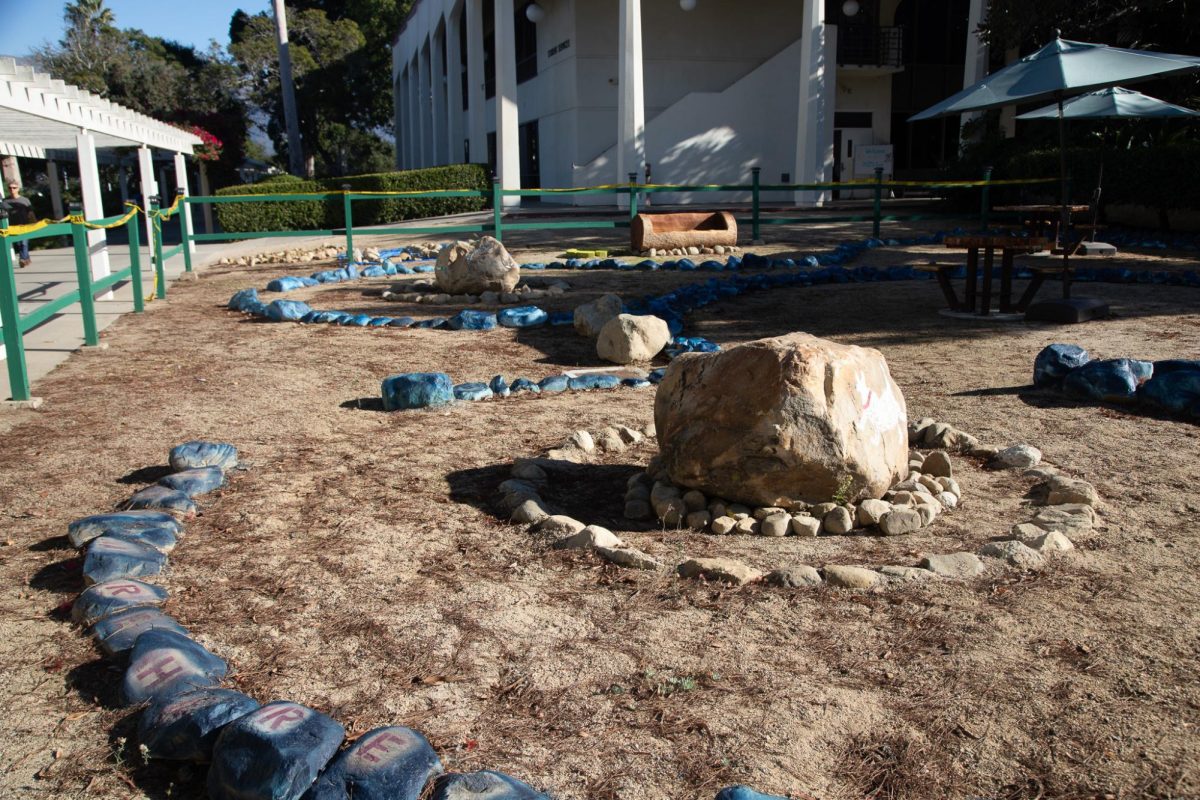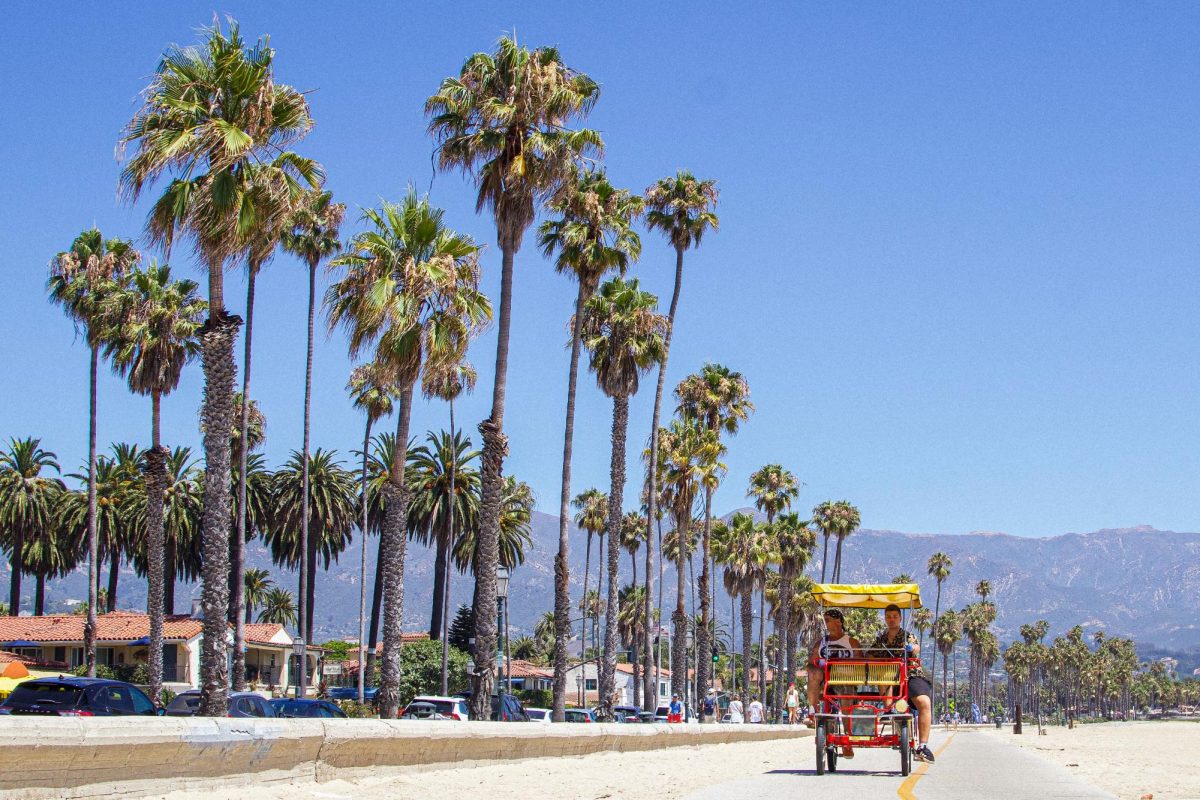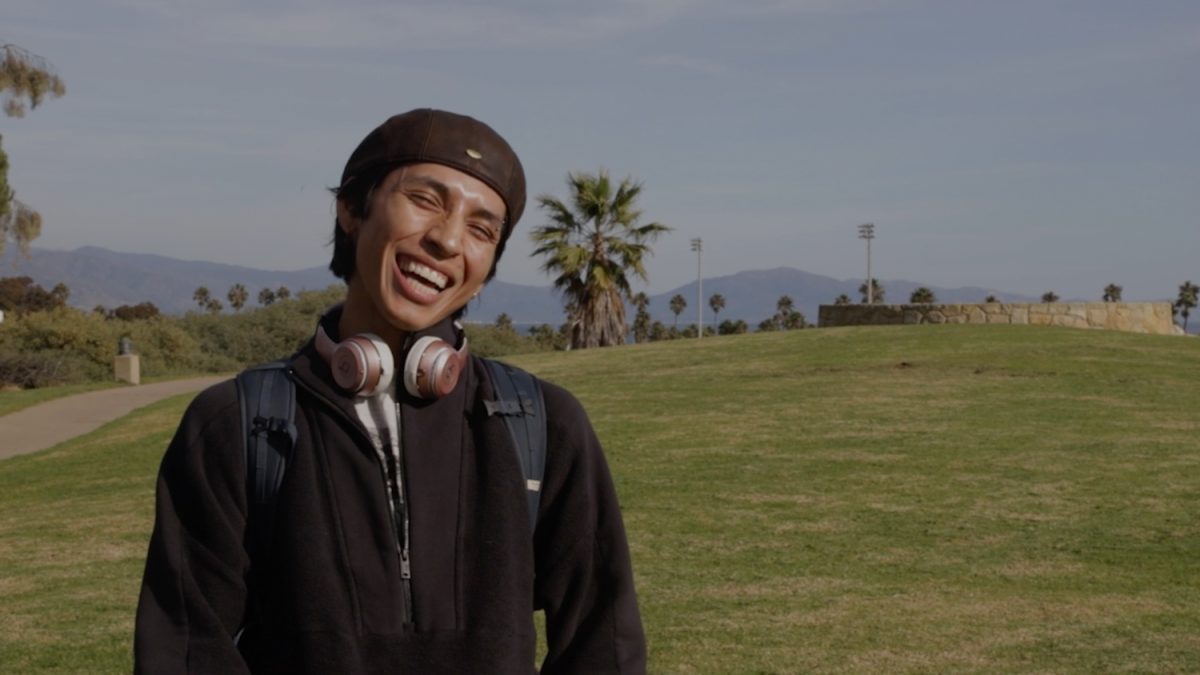Self-described as “a group of like-minded people interested in supporting one another,” the Rose Compass Group spoke to City College students Friday about its artistic depiction of connection with nature and the Santa Ynez River.
The group consists of six women who collaborated on their most recent project called “River’s Journey: One Year, Six Artists, Ninety-two Miles.” They said their art was inspired by artist Thomas Paquette’s use of an oil medium called gouache, a painting technique that creates a base by layering vibrant, cool colors on canvas. The Rose Compass group used gouache to capture the graceful river water and sleek mountain landscape of the Santa Ynez region.
“We’re different in the way we look at things,” said member Pamela Zwehl-Burke. “I tend to go directly to the look of the land and what it makes me feel. Then, I try to compose pictures that give back that feeling.”
The group’s artistic process began by exploring the environment. They took note of the constant cycle of the environment throughout the plight of fires, mudslides, and the ongoing drought. Temporarily inhabiting the area, they said they couldn’t ignore the effect the community and climate change had on the wildlife, too.
Zwehl-Burke, who taught Drawing, 2-D Design and Printmaking at City College almost 20 years, focused her piece on the periodical drying of the water pools underneath the Alisal Bridge.
“We live in an impermanent stream of experience, and when you look at moving water, you can’t take it in one moment,” Zwehl-Burke said. “You have to see it in the context of its living presence.”
Nicole Strasburg, former City College student and member of the Rose Compass Group, said she uses art to raise awareness on the toll the drought has had on the areas spanning from the Murrieta Divide to Cachuma Lake. Advocating for water conservation, Strasburg used gouache as a base layered with blue, green and earth-toned hues to represent the territory we tend to turn a blind eye to.
Libby Smith, former City College instructor, and Rose Compass member used her artwork to educate viewers about the California Steelhead Trout Recovery Plan. Her piece captured the essence of the Jalama Bridge and Salsipuedes Creek Fish Passages.
In her piece “Fish Ladder,” the vibrant soft colors depict what once was the home of one of the biggest trout migrations before dams were introduced.
Smith said she hopes the group’s collaboration has an impact on viewers that goes deeper than artistic enjoyment.
“Be awake to your surroundings,” Smith advised the audience. “Really notice the beauty that surrounds you. Appreciate that beauty and take care of it.”
Students can stop by and see the exhibit anytime through March at the Santa Barbara City Hall Gallery.


